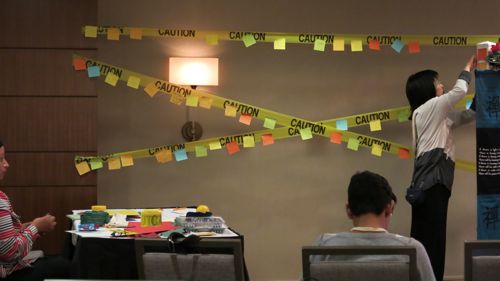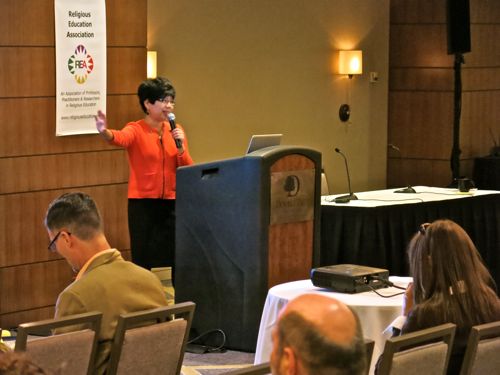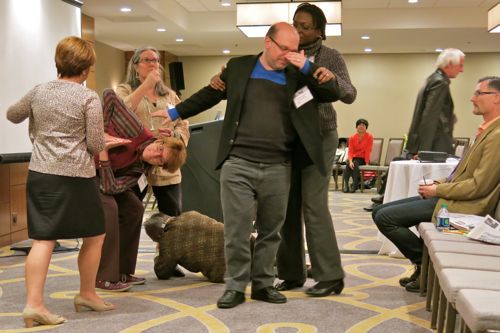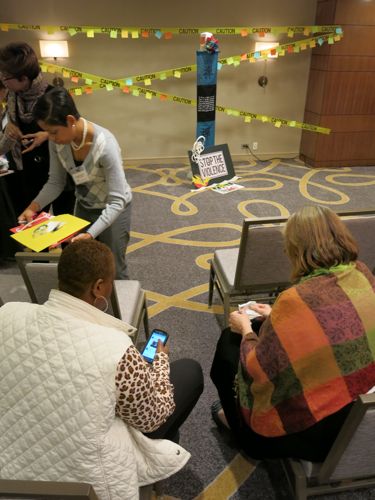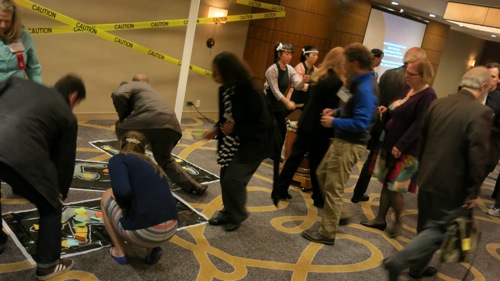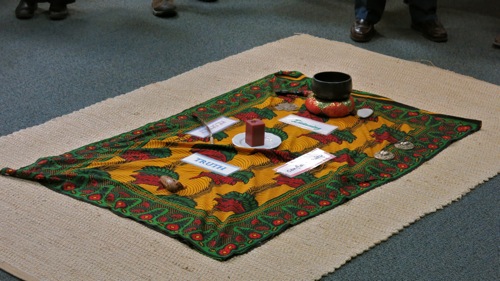In the second breakout session of the Religious Education Association 2014 conference, I attended a combined colloquium. Wing Yu Alice Chan, a doctoral student at McGill University, presented work in progress under the title of “Can Religious Literacy Deter Religious Bullying?” Andrea Haith of Canterbury Christ Church University presented her work in progress under the title of “An Exploration of Religious Education Teachers’ Understandings of Religiously Inspired Violence and the Worldviews of Children in the Classroom.”
Chan presented a definition of religious literacy based on a definition by Diane Moore (2007), the ability to discuss and analyze the intersections o religion with society.
She next defined religious bullying as bullying on the basis of religious difference, including physical and psychological bullying, online bullying, etc. In a review of literature on religious bullying, she found research that indicates that religious bullying gets transmitted across generations. Furthermore, she found research that the aftereffects of religious bullying can lead to religious extremism.
At the moment, her research is focusing on two North American religious literacy programs in public schools: Quebec’s “Ethics and Religious Culture” program, and the “World Geography and World Religions” programs in modesto, California. These are the only two mandatory courses in religious literacy that she found in North America. In her research so far what is most prominent is the role of dialogue.
Her research methodology is outlined in her online prospectus here.
Andrea Haith is a teacher of religious education in the United Kingdom (U.K.). She began by saying that teaching religious education is extremely challenging, as the young people taking the courses “don’t see the point.” It is also challenging because “any discussion of Islam does evoke stereotypes.”
Haith said that the U.K. has complex legislation that implements religious education in the public schools. The challenge then is how to discuss religiously inspired violence within this framework. Her research focuses on the teaching of religiously inspired violence as it relates to religious education teaching more generally.
Her hypothesis is that religious education has become “sanitized,” in part because examination-focused learning outcomes may serve to distort the subject matter of religious education. Her research questions include:
— What is the nature of RE teacher’s understandings of religiously inspired violence?
— How are these understandings translated into teaching practice in the classrooms?
— Is there a relationship between teachers concepts of religiously inspired violence and their pedagogy?
Haith’s research project is outlined online here.
At the end of the two presentations, a questioner pointed out that a key issue is how we train teachers. Haith and Chan both agreed.
Another questioner pointed out that it is problematic to consider religious literacy out of any other context, and that religious literacy must be placed in a values-based context. Haith and Chan seemed less interested in this idea.
I asked a somewhat inarticulate question about the importance of students recognizing their own religious identity. Interestingly, in a later colloquium, I learned about the “worldview framework approach” in Mualla Selçuk and John Valk’s presentation “Journeying into Islam” (more on their research here); Selçuk and Valk’s worldview framework explicitly names religious identity as important.
I would say that I found both Haith and Chan’s research to be of great interest and importance. Chan’s research into the relationship between religious literacy and religious bullying could be especially valuable.
